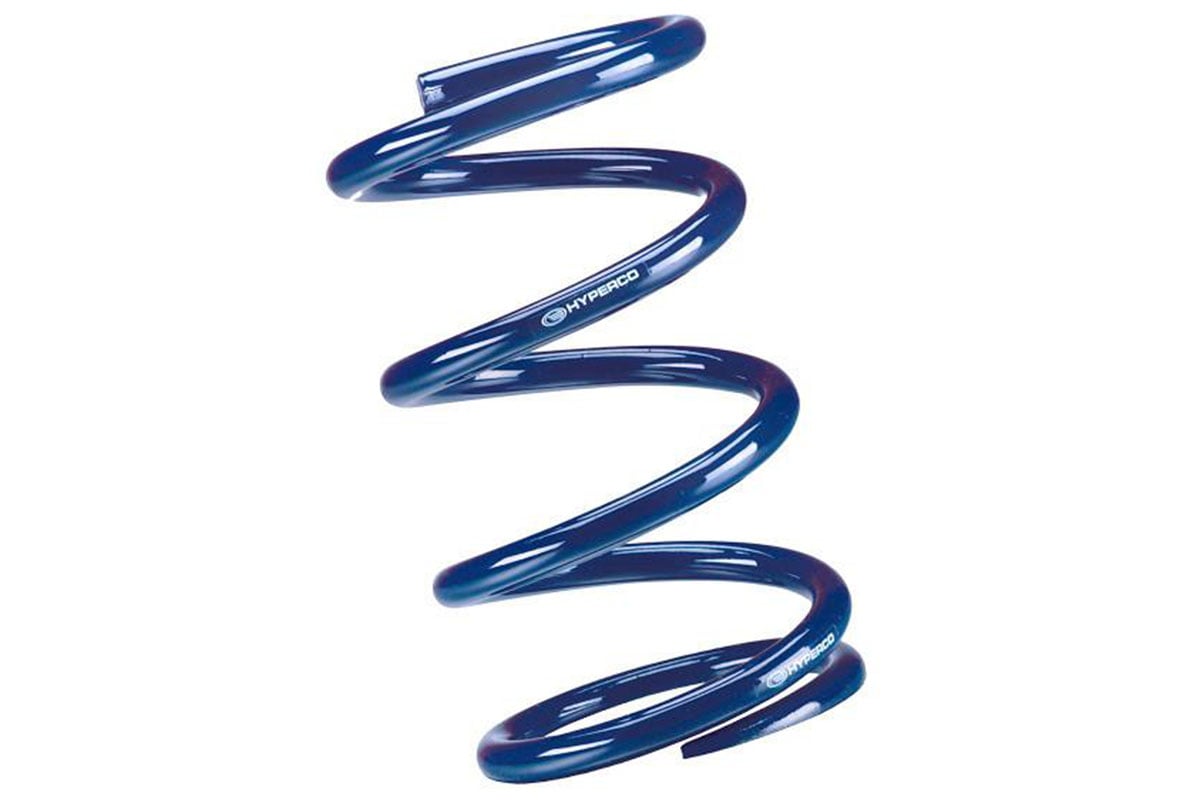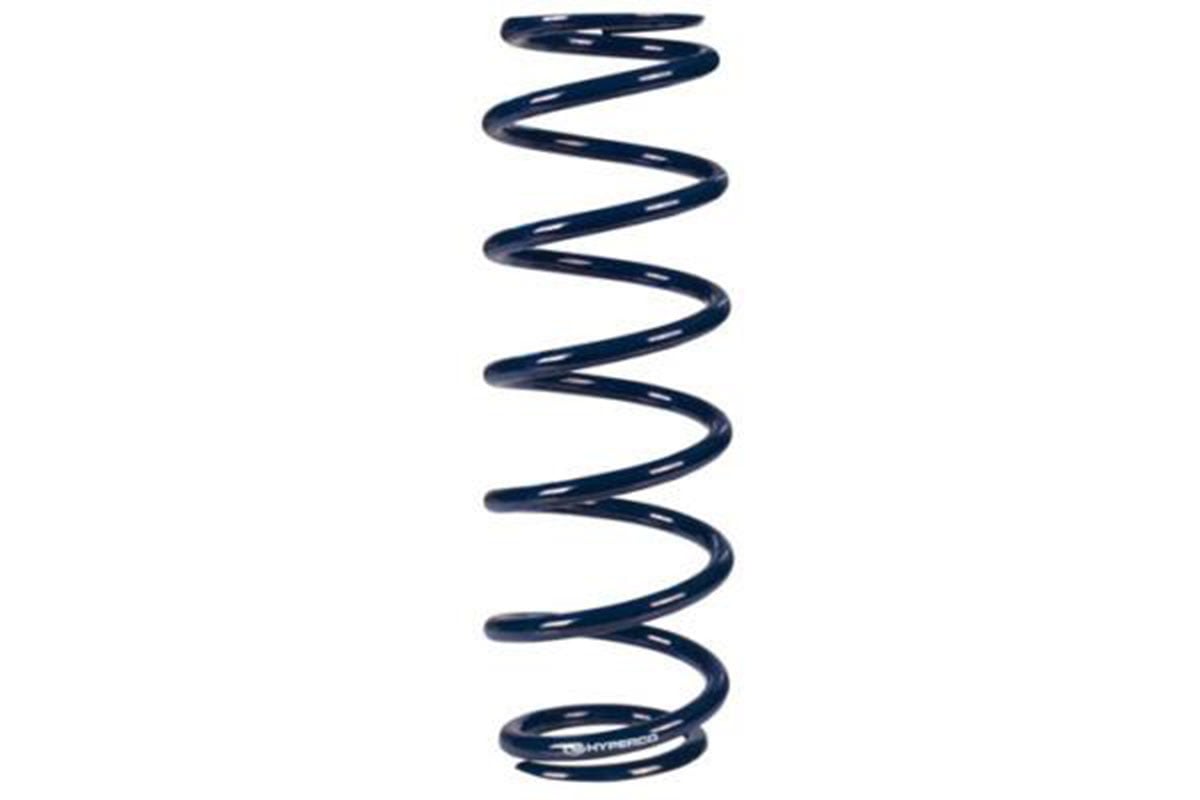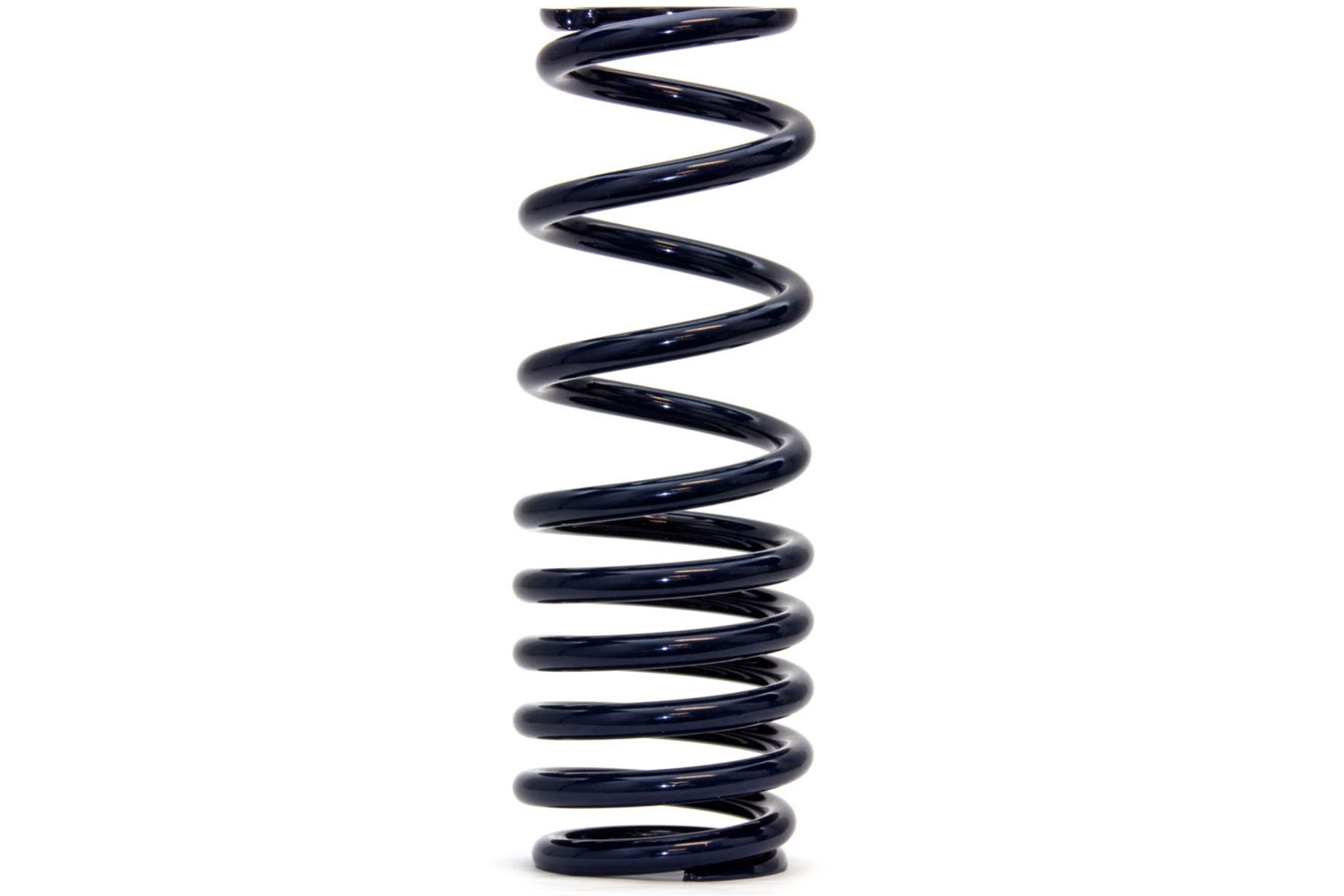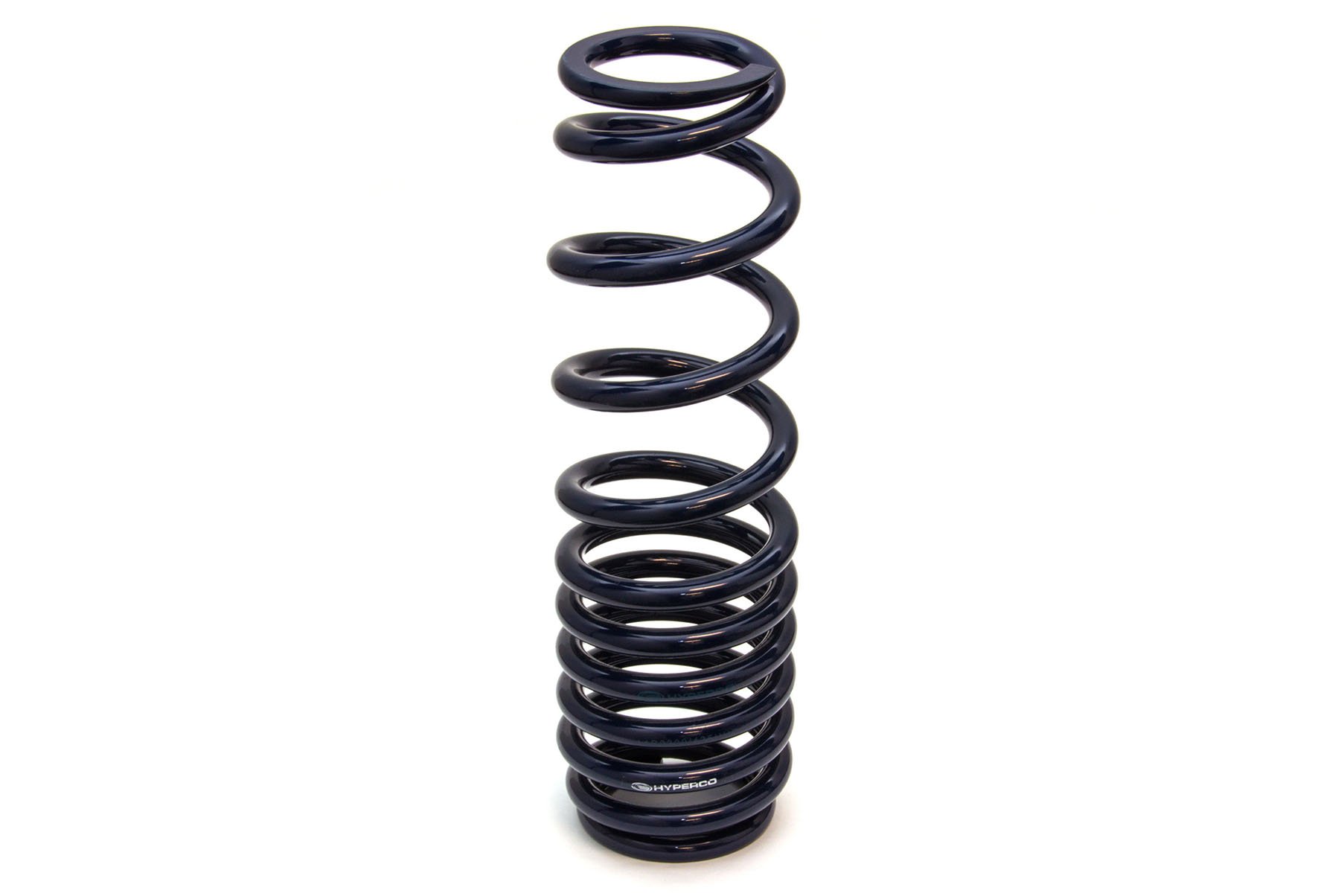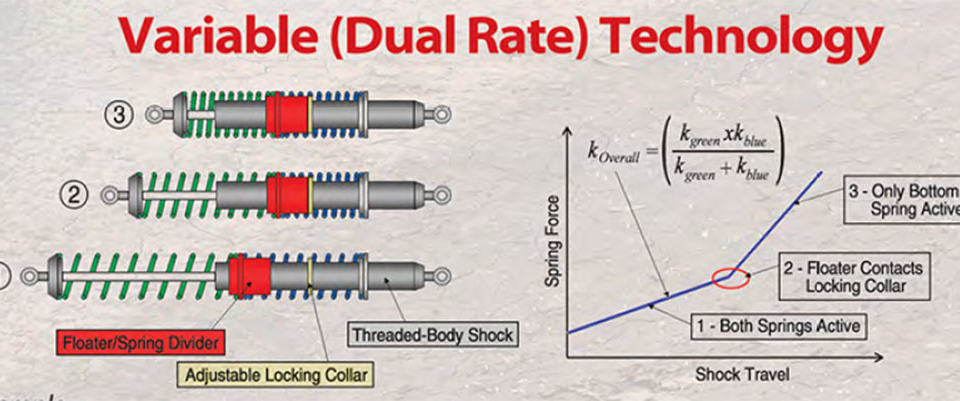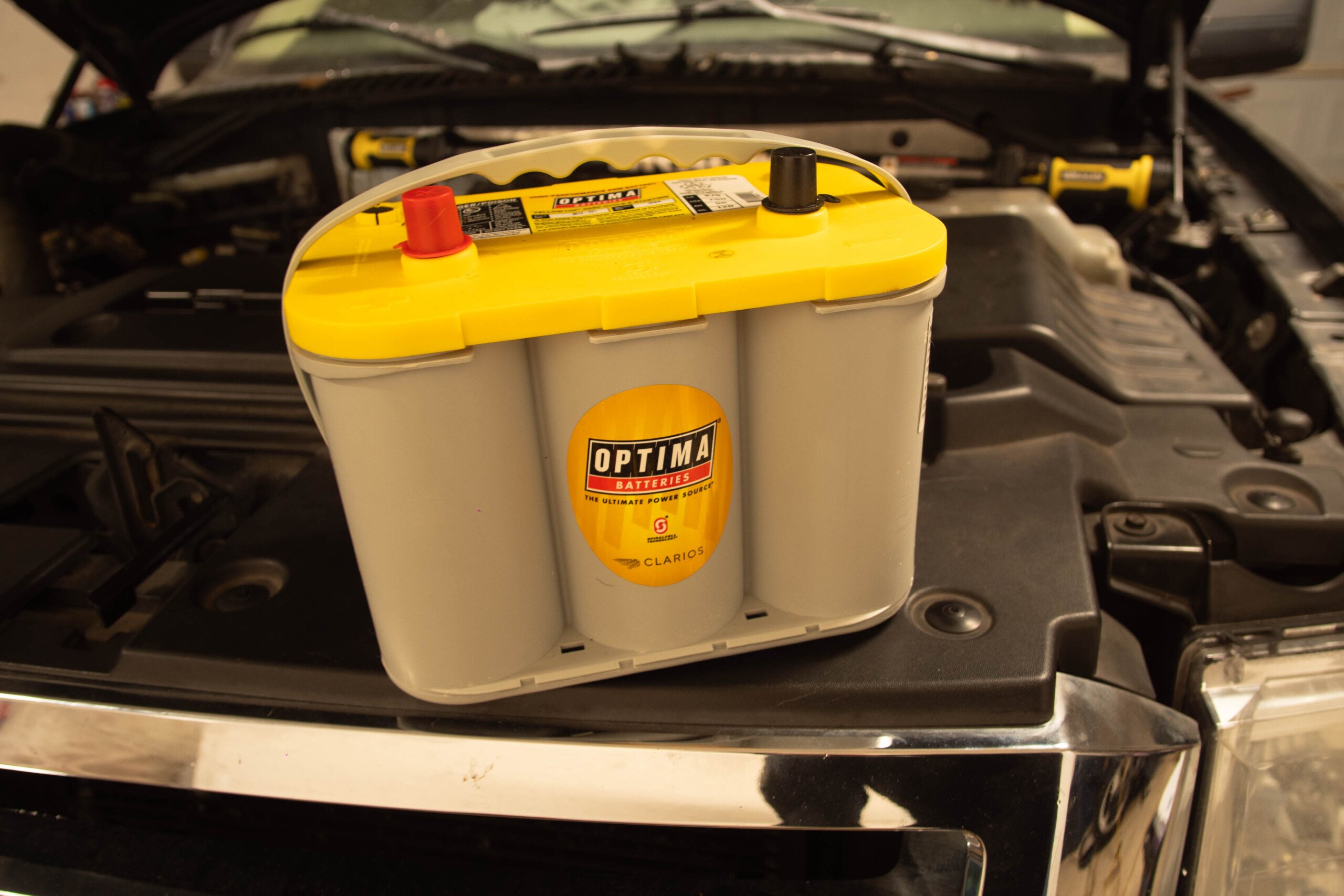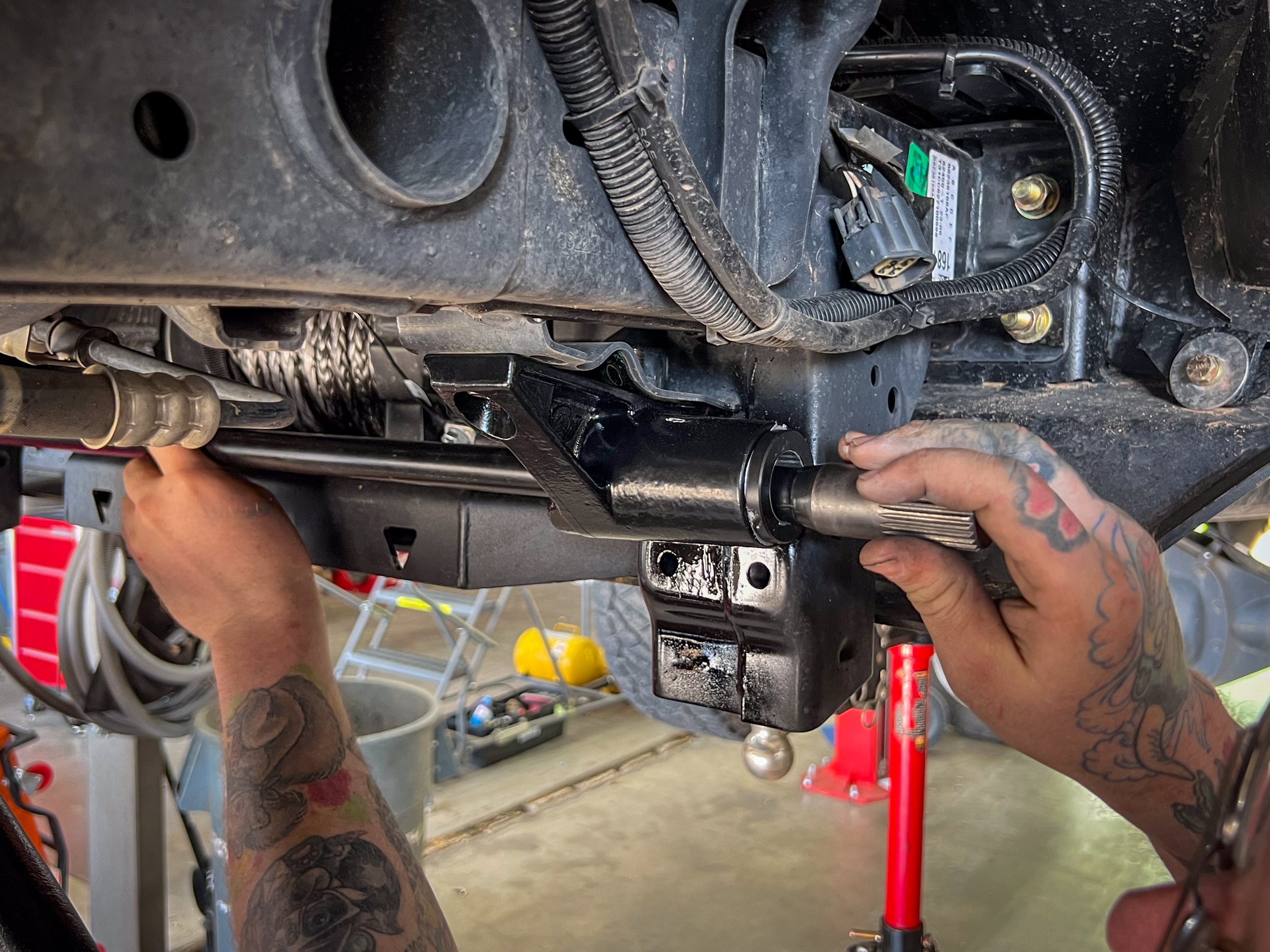Whether it’s for off-roading, drag racing, or corner carving, dialing in the suspension setup of a performance vehicle can be something of a dark art. There’s a wide array of variables to consider when attempting to hone in on the sweet spot, and what might work for one course or trail might be way off for another. Outside factors like weight distribution changes and driver preference can throw off the mix as well.
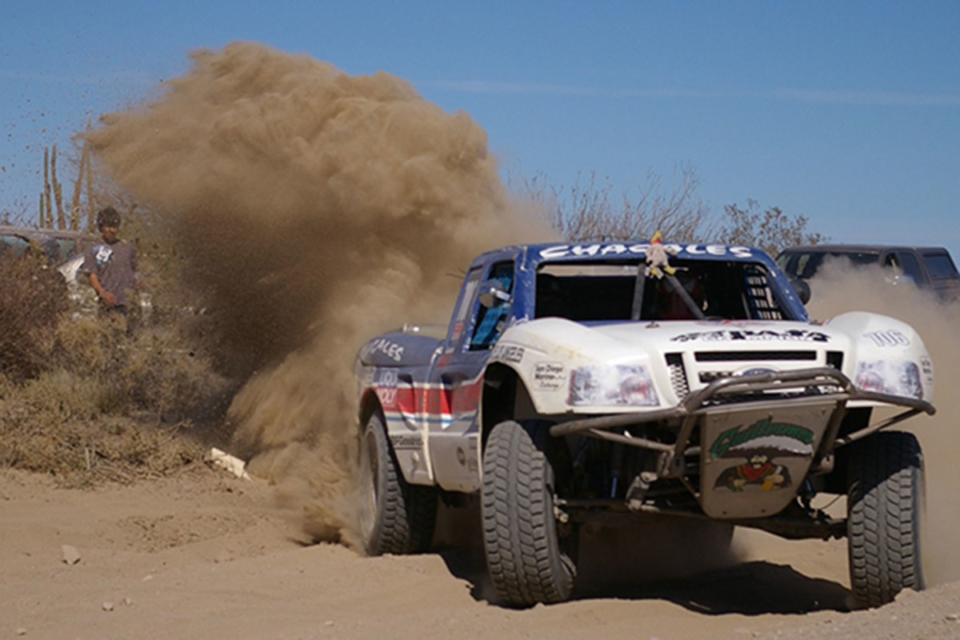
Suspension tuning varies greatly depending on the specific application. High-speed off-road setups are among the most demanding, as the suspension is required to be compliant over smaller bumps while not allowing the vehicle to bottom out over the larger stuff.
Still, there are some ways to adjust a suspension system’s behavior toward those preferred characteristics, and one of the simplest ways to do so is with the spring setup.
However, when making suspension changes it’s just as easy to make the setup worse as it is to improve it if you go into the project without a well-thought-out strategy, and that starts with a solid understanding of what needs to change about the suspension’s performance and how best to address it.
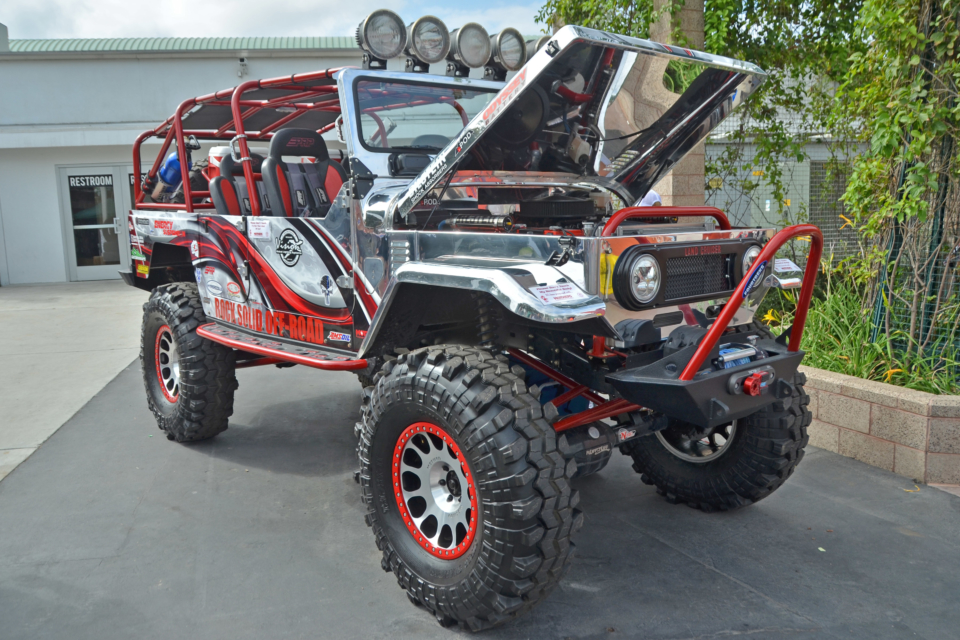
Knowing the vehicle and its intended application is the first step in selecting the right springs. Rock Solid Off Road‘s Sniper out on display at the Sand Sports Super Show rocking Hyperco springs.
With this in mind, we sat down with Kelly Falls, VP of motorsport and performance products for Hyperco, and our discussion gave us a better sense of the role that springs play and to take a look at the different options that are now available to builders who’re seeking to take their suspension system up a notch.
Designing A Better Spring
While a lot of OEM suspension setup is focused on ride compliance and NVH levels, even on performance-focused vehicles, Falls points out that hardcore enthusiasts put predictability higher on the wish list. “Our whole background is in motor racing,” he explains. “So our experience has been with customers who are looking for a spring that is very linear in its rate, and that rate is accurate and consistent through its displacement. And they want that in the lightest physical weight possible.”
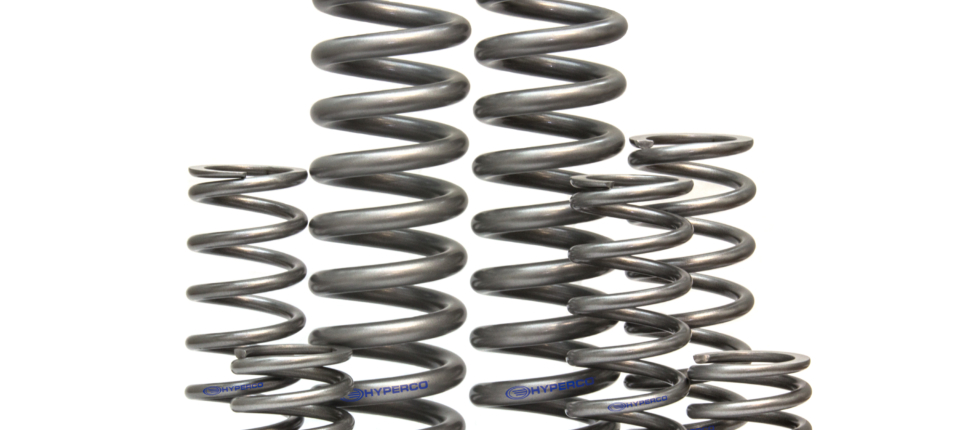
Ideally, force is sent straight down through the spring and shock as they compress. In testing Hyperco discovered that conventional spring design allowed for a lot of axial loading. This results in inconsistent performance and more friction, so Hyperco sought out a better design to address the issue.
Falls says that research conducted for such customers has also played a role in development efforts with spring design. “A few years back we had some IndyCar customers come to us,” he recalls. “They were trying to quantify side force in a shock/spring assembly. When you compress a spring, ideally you want all of that energy to go straight down, rather than going down at an angle, which creates friction and extra load on the shock shaft as well as the seals, and increases drag overall. What we came to understand is that there’s definitely a component of axial load when you compress a spring, and we wanted to improve that.”
Falls says that the positioning of one tip of the spring relative to the other proved to be a major factor. “There’s a range from one tip to the other that you want the spring to be in where it exerts the minimum amount of side force,” he says. “Historically, the problem has been that most coilovers were built to a constant inside diameter. So when our engineering guys would come up with a design, they would base the wire feed on the total corrected stress member of spring so that it’s not overstressed.”
While that’s crucial because overstressing the spring will cause it to yield and lose installed height, which will negatively affect suspension performance and consistency, it wasn’t providing the tunability that Hyperco was after. “While you could adjust the whole inside diameter of the spring, but you couldn’t really influence over tip to tip orientation,” he says. “So, one of the things we started to look at was implementing what we call a ‘body bulge’ in the spring. That allowed us to keep the ends indexed to the inside diameter that fit standard hardware. Therefore our customers wouldn’t have to go out and buy a different perch to get the spring to fit.”
The body bulge feature in these springs might appear similar to a barrel spring design but the aesthetic is deceiving. These are essentially "tuned" conventional springs that provide a precise amount of stress resistance, which cuts the fat while providing uniform performance.
Designing that body bulge into the middle of the spring provided Hyperco a new level of tunability to their conventional springs. “The bulge can vary,” Falls explains. “That allowed us to arrive at what we believe to be the optimum stress number for a particular spring material and diameter. That way we never overstressed the spring, but we also avoided excess weight, which gave us more room to tune the spring.”
Falls tells us this design is sometimes misidentified as a barrel spring. “That’s simply not the case,” he says. “We can vary that amount of body bulge down to a level that allows us to tune it while remaining totally linear and light. Most barrel springs use a constant inside diameter on both ends and don’t really have this kind of optimization. All those really do is create more clearance between the shock body and the inside diameter of the spring. But they don’t really tune it to address the issues with lateral load and friction.”
Conventional Versus Progressive Rate Springs
As the term implies, conventional springs are the most common types of springs you’ll find on the market. The rate, denoted in pounds, indicates how much force is required to compress the springs an inch, and that amount of force is doubled with each additional inch of compression.
While the design is straightforward and cost-effective, it’s also limited. “The fact that it’s linear doesn’t give you any advantage in terms of a stiffer rate at some point in its displacement,” Falls points out. “However, on a lot of on-road racing applications, they want the spring to be linear, and they’ll tune any increase they want into the compression valving in the shocks or the rocker arms in the suspension.”
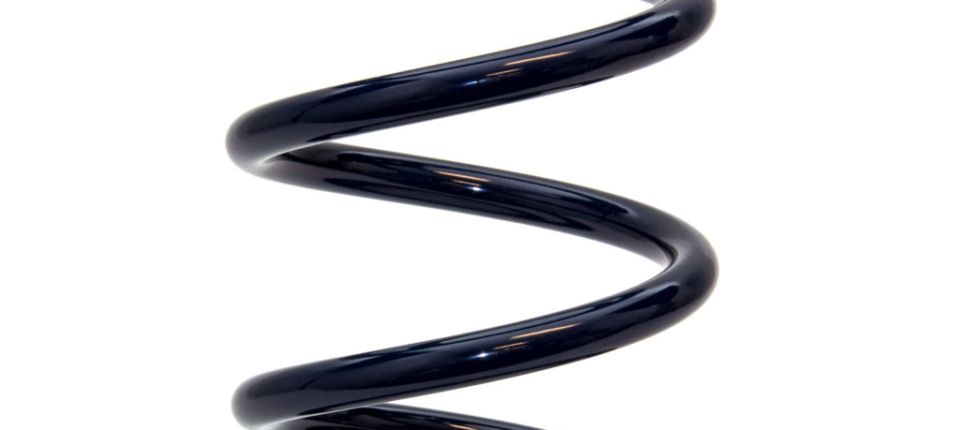 But that kind of tuning doesn’t translate well to off-road setups, Falls explains. “A few years back, the hardcore off-road guys came up with the concept that they wanted a mixed ride quality. It had to be initially soft so that the suspension would absorb high-speed dips and washboard surfaces with a compliant ride, but if you hit something really big or deep, that the suspension wouldn’t bottom out.”
But that kind of tuning doesn’t translate well to off-road setups, Falls explains. “A few years back, the hardcore off-road guys came up with the concept that they wanted a mixed ride quality. It had to be initially soft so that the suspension would absorb high-speed dips and washboard surfaces with a compliant ride, but if you hit something really big or deep, that the suspension wouldn’t bottom out.”
Thus the question became how to accomplish that. “You build a spring with a progressive design,” Falls says. Progressive rate springs allow for a single spring to have two distinct compression characteristics, with the secondary rate taking effect when significant suspension displacements occur.
The tighter coils on the lower section of these progressive rate springs illustrates how the design works. When the spring compresses far enough, the stiffness characteristics of those closely-spaced coils start to come into play.
“You have a certain coil spacing in a spring through the linear part of its deflection,” says Falls. “At some point, the other coils start to close out that have closer adjacent coil spacing, and that’s what gives it that progressive rate. In a lot of ways, that can be fine. There are many applications that the design works really well on. But the downside is that it’s not really tunable beyond that.”
That lack of fine-tuning capability had the hardcore off-road contingent looking for another solution that would be better suited to the demands off the beaten path.
Stacked Spring / Dual Rate Setup
“The off-road guys were kind of pioneers of the idea of putting two springs on top of one another in series,” says Falls. “It allows you to have a way to tune those two rates into one system by adjusting a ring on the shock. You can move it up and down that threaded part of the shock body to alter the gap that connects the two springs. Moving it closer to the gap you can mechanically lock one spring out quicker while moving it away from the hardware will lock it out later.”
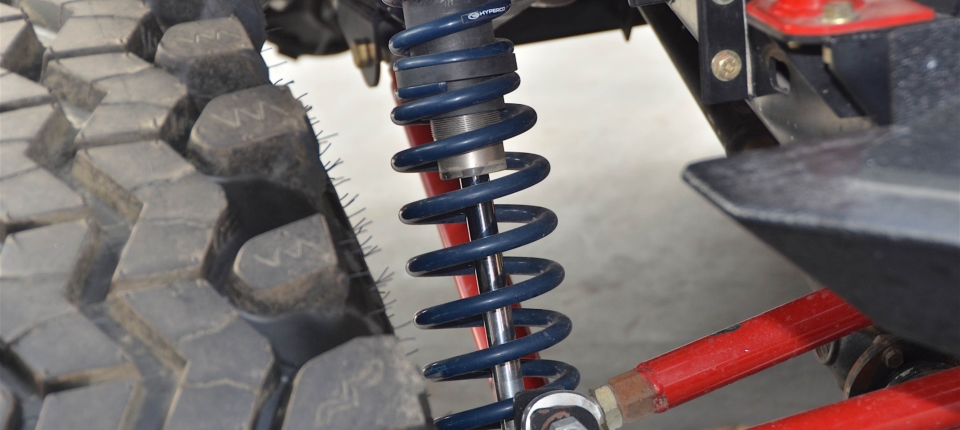
By pairing two different springs together with an adjustable lockout, you can fine-tune the threshold where the secondary spring’s stiffness comes into play.
What this in-series stacked spring setup allows builders to do is adjust where in the suspension travel the secondary spring takes over the work. “You get the best of both worlds,” Falls says. “It allows for a compliant ride over those washboard surfaces that minimizes body motion. But if the truck goes airborne or hits a big dip that demands a high amount of suspension travel that reaches the lockout, instantly the spring changes to that stiffer rate, and it keeps the vehicle from bottoming out.”
Choosing both spring rates, as well as where the transition should occur in a particular suspension’s displacement, is often a matter of dialing it in through testing. “It’s hard to say anything in absolute terms because vehicle weights vary, as do the roads they’ll be used on,” Falls says.
“The conditions are going to have a big impact on proper setup requirements. But typically, if you look at a vehicle going through the desert, when it’s working the best the roof of the vehicle stays at a pretty consistent level – below it the suspension is doing all the work, absorbing all those displacements. That gives you a good idea that the suspension is doing its job because it’s not constantly transferring all of those forces to the entire vehicle.”
Falls says there’s also a general rule of thumb with these dual rate setups. “When folks start developing setups like these, they’ll normally develop a specific path through a particular course so they have a way to compare the suspension’s behavior as they’re tuning it. If you see the whole vehicle moving up and down constantly, that’s a pretty good indicator that the setup is too stiff, because the suspension isn’t doing enough of the work.”
The conditions are going to have a big impact on proper setup requirements. But typically, if you look at a vehicle going through the desert, when it’s working the best the roof of the vehicle stays at a pretty consistent level – below it the suspension is doing all the work, absorbing all those displacements. -Kelly Falls, Hyperco
Softening the tune-up to the point where there’s minimal body motion through that same section is usually the sweet spot for those demands on the suspension, but that’s only half of the equation.
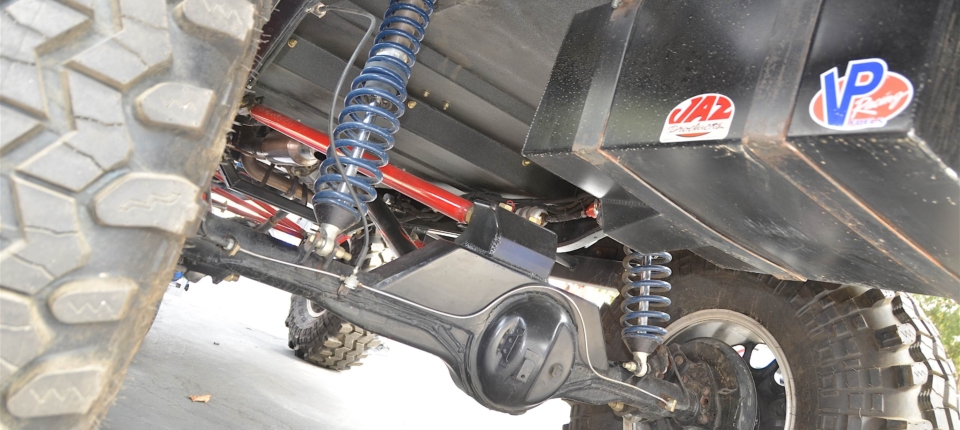
Ultimately, dialing in stacked setups like these is a matter of determining the proper spring rates for both the first and secondary phases of the suspension’s compression through factors like vehicle weight and the terrain it will be used in, and then tweaking where the threshold of the transition to the secondary springs occurs through testing.
“The other component is whether or not that secondary spring rate is going to be stiff enough when you hit something big,” he says. “That gets a bit more tricky, and really just requires getting out on the trail and tuning where the secondary rate comes in. The balance is when the combined rate provides a nice – compliant ride at the secondary rate is stiff enough not to go to solid or bottom out when big displacement events occur.”
The takeaway here is that while linear and progressive rate springs keep things simple, they also limit the amount of adjustability they can provide to a suspension.
Conversely, a dual rate setup allows for far more adjustability, essentially acting as two suspension setups in one. However, it also requires some fine-tuning on the part of the end user for a specific application – a role that might change, depending on the weight the vehicle is carrying around and where it’s being used.
Either way, it’s clear the folks at Hyperco have the products and expertise to help you get your suspension sorted out. Give ’em a buzz today and see what they can do for your rig.

